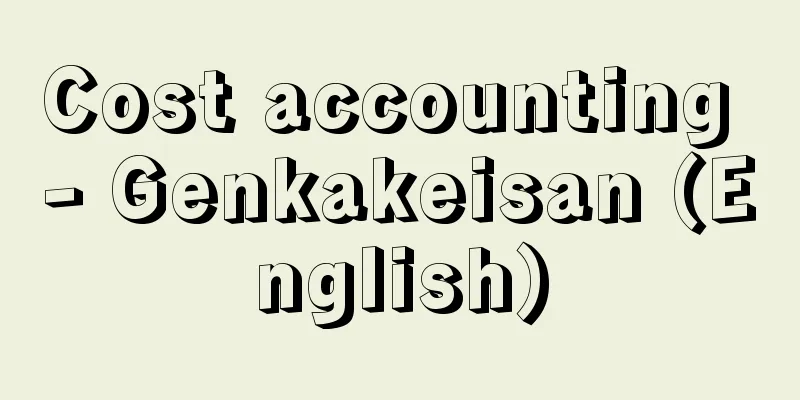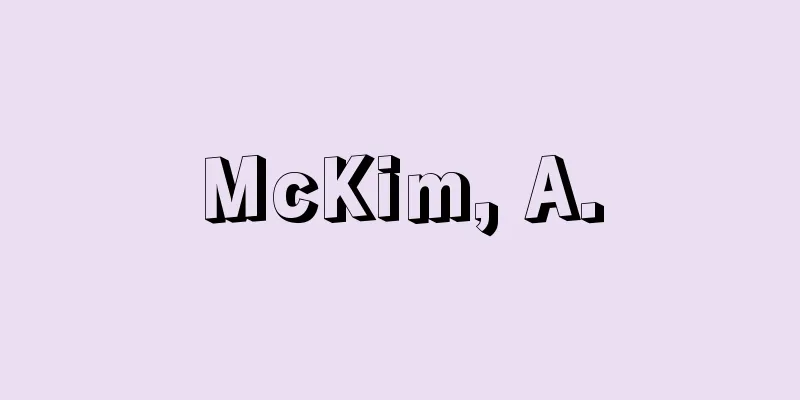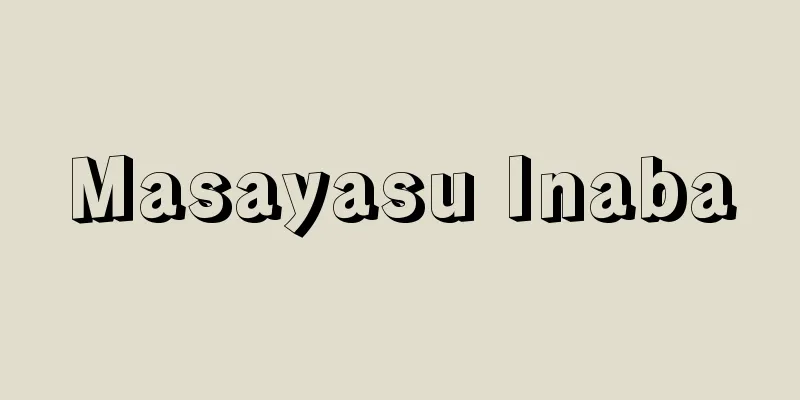Cost accounting - Genkakeisan (English)

|
In general, it is often used as a term to indicate the calculation of the total cost per unit of a product that is distributed in the market from production to external sale. It is a calculation of the cost price compared to the market price. However, cost accounting, which is positioned as a field of academic accounting, is more strictly defined as follows. In other words, cost accounting is a general term for a series of systems that compile the economic value sacrifices that are consumed or will be consumed in the goal-oriented activities of a specific entity (in most cases, a profit-making company) by cost element, department, product, etc., and further analytically by project, region, service, etc., and finally calculate and report the cost per cost accounting unit. [Tokai Mikio] History of Cost AccountingThe origins of cost accounting can be traced back to the 15th and 16th centuries, but the foundations of modern cost accounting were formed in the late 19th and early 20th centuries, when companies around the world, after the Industrial Revolution, began to adopt mass production methods that involved huge capital investments. In terms of calculation techniques, it can be said that modern cost accounting began when a theory for allocating overhead was inevitably required. Later, in the 20th century, standard cost accounting appeared under the influence of the scientific management movement, and the encounter with the global recession after World War I led to the development of profit management-oriented cost accounting, such as direct cost accounting and break-even analysis. Furthermore, after World War II, the field of decision-oriented cost accounting expanded through the fusion of other academic fields such as operations research (OR), mathematics, and statistics. Modern cost accounting, while still in flux, has comprehensively systematized these methods and concepts. [Tokai Mikio] Purpose of Modern Cost AccountingModern cost accounting essentially functions as a subsystem with corporate accounting as the main system, so its objectives are divided into financial accounting objectives, which are aimed at creating reports (financial statements) for external stakeholders, and management accounting objectives, which are aimed at providing effective accounting data to internal corporate managers. In more detail, it can be subdivided into the following objectives: (1) Calculate the true costs required to be included in the financial statements and submit this data to the financial accounting authority. (2) Providing cost information necessary for budget preparation as a short-term profit plan and performing one function of budget management using that data. (3) To suggest or assist in the implementation of cost classifications and calculation structures useful in measuring the performance of business divisions or segments (such as product types, sales regions, customer segments, etc.). (4) To provide cost information necessary for cost management practice using standard cost calculation, etc. In modern times, this includes suggesting and implementing proactive cost reduction measures. (5) Providing the data and computational techniques needed for a company's short-term, tactical, day-to-day planning, such as product mix and make-or-buy decisions. (6) To provide comprehensive data, together with other calculation techniques, that are useful for setting basic long-term, strategic management plans, such as for capital investment. When these objectives are organically combined with the existing financial accounting system (actually, double-entry bookkeeping system) and put into practice on a continuous basis, this is called a "cost accounting system." This type of cost accounting field is also sometimes called "cost accounting." In contrast, cost surveys and analyses that are conducted on an ad hoc basis, such as cost measurements required for long-term and short-term individual decision-making, are called "special cost surveys." [Tokai Mikio] Types and processes of institutional cost accountingThe purpose of calculations carried out as part of a cost accounting system is primarily to accurately calculate product costs, and the practices involved can be listed as follows: (1) Actual cost accounting and standard cost accounting There is also estimated cost accounting, which is used for budget preparation and price determination. (2) Full cost accounting and direct cost accounting (variable cost accounting) Under the current system (law), the full cost accounting method, in which all manufacturing costs are included in the product cost, is permitted. (3) Individual cost accounting and comprehensive cost accounting Generally, the former is suitable for companies that use individual order production methods, while the latter is suitable for companies that use forecast mass production methods. In principle, the procedure for calculating product costs is to proceed in the order of expense item, department, and product. Additionally, costs are primarily classified by type and function, but ultimately they must be divided into direct and indirect costs according to their relationship to the product. Furthermore, if necessary, the division of variable and fixed costs is also taken into account according to their relationship to the rate of operation. [Tokai Mikio] Cost accounting as a special cost studyTo assist managers in making selective decisions, it is useful to tailor special accounting information, which is prepared outside the framework of the accounting system. This type of information, cost data, is based on relational cost analysis, and it is said that "different costs are used for different purposes." Since all decisions involve the selection of future courses, costs are future costs and opportunity costs. In principle, the analysis is carried out by calculating differential costs compared with differential revenues. All of these are called special costs, but in addition to these, concepts such as added costs, sunk costs, and avoidable costs are also used from time to time. Since the 1960s, special cost studies have been drawing attention not only from traditional techniques specific to cost accounting, but also from the approach of new techniques developed in the fields of business mathematics and management accounting. [Tokai Mikio] "Cost Accounting Theory" by Toshiro Hiromoto (1997, Chuo Keizai Publishing)" ▽ "Cost Accounting" 6th Edition by Kiyoshi Okamoto (2000, Kunimoto Shobo)" ▽ "Introduction to Cost Accounting" 2nd Edition by Takashi Shimizu, Keiichi Hasegawa, and Masashi Okumura (2004, Chuo Keizai Publishing)" ▽ "Cost Accounting and Management Accounting for the Accounting Profession - Enabling Sustainable Growth and Development of Companies" by Mikio Tokai (2007, Seibunsha Publishing) [Reference] | | | | | | |Source: Shogakukan Encyclopedia Nipponica About Encyclopedia Nipponica Information | Legend |
|
一般には、市場に流通する商品が製造され外部に販売されるまでに費やされたコストのいっさいについて、これが当該商品の1単位当りいくらになるかを計算することを示すことばとして使われることが多い。市場価格と比較される原価の計算といったところである。しかし学問としての会計学の一領域として位置づけられる原価計算は、いますこし厳密に、次のように定義されている。すなわち、原価計算はある特定の主体(ほとんどの場合は営利企業)が目的志向的に行う製造や販売などの行動において費消された、あるいは費消されるはずの、経済的価値犠牲を、原価要素別、部門別、製品別などに、さらに分析的には、プロジェクト別、地域別、サービス別などに集計し、最終的には、各原価計算単位当りに原価を算定し報告する一連のシステムを総称する。 [東海幹夫] 原価計算の歴史原価計算の萌芽(ほうが)は、15、16世紀にまでさかのぼることができるといわれるが、現代原価計算の基礎は、産業革命期を経た世界の諸企業が巨額な設備投資による大量生産方式を導入するようになった19世紀後半から20世紀初頭にかけて形成された。計算技術的には、間接費の配賦理論が必然的に要求されたことにより、近代的原価計算はスタートしたといってよい。その後20世紀に入り、科学的管理運動の影響を受けて標準原価計算が登場し、第一次世界大戦後の世界的不況との遭遇により、利益管理志向の原価計算、すなわち直接原価計算や損益分岐点分析などが発展した。さらに、第二次世界大戦後は、オペレーションズ・リサーチ(OR)、数学、統計学など、他の学問領域との融合による意思決定志向の原価計算領域が拡大されることになった。現代原価計算は、いまだ流動的ながらも、これらの手法や概念を包摂し総合的に体系化してきている。 [東海幹夫] 現代原価計算の目的現代の原価計算は、実質的に、企業会計をメインシステムとしたサブシステムとして機能しているので、その目的は、外部利害関係者への報告書(財務諸表)の作成をテーマとする財務会計目的と、企業内部の経営管理者への有効な会計データの提供をテーマとする管理会計目的とに二分される。さらに詳しくは、次のような諸目的に細分することができる。 (1)財務諸表に表示するために必要な真実の原価を算定し、財務会計機構にこのデータを送付すること。 (2)短期利益計画としての予算編成に必要な原価資料を提供したり、そのデータによる予算管理の一機能を果たすこと。 (3)事業部やセグメント(製品種類、販売地域、顧客層など)の業績測定に役だつ原価分類や計算構造を示唆したり実施の一助となること。 (4)標準原価計算などを利用して、原価管理実践のために必要な原価資料を提供すること。現代的には、積極的な原価引下げ方策を示唆したり実施したりすることを含む。 (5)製品の組合せや部品の自製か購入かの決定など、企業の短期的、戦術的な日常業務計画に必要なデータと計算技法を提供すること。 (6)設備投資などの長期的、戦略的な経営の基本計画の設定に役だつデータを、他の計算技法とともに総合的に提供すること。 これらの諸目的を、現存の財務会計機構(実際的には複式簿記機構)と有機的に結合して常時継続的に実践化しようという場合、これをとくに「原価計算制度」とよんでいる。またこのような原価計算領域を「原価会計」と称することがある。これに対して、長期および短期の個別的意思決定に必要な原価測定など、随時臨時的に行われる原価の調査や分析は「特殊原価調査」とよばれている。 [東海幹夫] 制度的原価計算の種類とプロセス原価計算制度として実施される計算の目的は、主として製品原価の正確な算定であり、この実務を対置的に列挙すれば次のようになる。 (1)実際原価計算と標準原価計算 ほかに予算編成や価格決定に利用される見積原価計算をあげることもできる。 (2)全部原価計算と直接原価計算(変動原価計算) 現行の制度(法律)上は、製造コストのすべてを製品原価に算入する全部原価計算方式が容認されている。 (3)個別原価計算と総合原価計算 一般的には、前者は個別受注生産方式の企業に、後者は見込み大量生産方式の企業に適している。 製品原価算定の手順は、原則として、費目別計算、部門別計算、製品別計算の順に従って進められる。また、原価は第一次的には、形態別分類と機能別分類によって科目設定がなされるが、最終的には、製品との関係によって直接費と間接費に区分されなければならない。さらに必要に応じて、操業度との関係により変動費と固定費の区分を加味したりする。 [東海幹夫] 特殊原価調査としての原価計算企業の経営管理者の選択的意思決定には、特別な会計情報をあつらえることが有効であり、これは会計制度の枠外で作成される。この種の情報としての原価データも関連原価分析が基本であり、「相異なる目的には相異なる原価を」などといわれている。意思決定はすべて将来コースの選択であるから、原価は未来原価であり、また機会原価(オポチュニティ・コスト)である。原則としてその分析は、差額収益と比較される差額原価の算定によって実施される。これらはすべて特殊原価とよばれるが、このほか、付加原価、埋没原価、回避可能原価などの概念が随時利用される。1960年代以降、特殊原価調査は、原価計算固有の伝統的な技法に加えて、経営数学や管理会計の領域において開発された新しい技法との接近が注目されている。 [東海幹夫] 『廣本敏郎著『原価計算論』(1997・中央経済社)』▽『岡本清著『原価計算』6訂版(2000・国元書房)』▽『清水孝・長谷川恵一・奥村雅史著『入門原価計算』第2版(2004・中央経済社)』▽『東海幹夫著『会計プロフェッションのための原価計算・管理会計――企業の持続的な成長と発展を可能にする』(2007・清文社)』 [参照項目] | | | | | | |出典 小学館 日本大百科全書(ニッポニカ)日本大百科全書(ニッポニカ)について 情報 | 凡例 |
<<: Cost Accounting Standards - Genkakeisankijun
Recommend
Empress of Ireland
...Investigations after the incident revealed tha...
Maimonides, Moses; Moses ben Maimon
Born: March 10, 1135, Cordoba [died] December 13, ...
Can - Can
〘Noun〙① A kettle with a string . Often made of bro...
Geshuhan - Kajokan
A military commander of the Tang Dynasty in China...
Foundation mortgage - Zaidan teito
In industrial, mining, fishing, railroad and othe...
Atrachya menetriesi (English spelling)
…They have one generation per year and overwinter...
Geber
...Arabian alchemist. Latin name Geber. His fathe...
Financial analysis - zaimubunseki (English spelling) financial analysis
Also known as financial statement analysis. Analys...
Ittada - Ittchu
Year of birth: Year of birth and death unknown. A ...
Unity of religion and politics
Matsuri means ritual and Sei means politics, and ...
Equilibrium point
…Non-zero-sum n- person games are divided into no...
Otogoze - Otogoze
〘Noun〙① Younger daughter. The youngest daughter. A...
built-up area
…There are also various urban areas, such as reta...
El Hajar Steelworks
…It has long flourished as a port city, and durin...
Boshubora (Boushuhora) - Boshubora (English spelling) Charonia sauliae
A large snail shell of the family Algalidae. The s...









